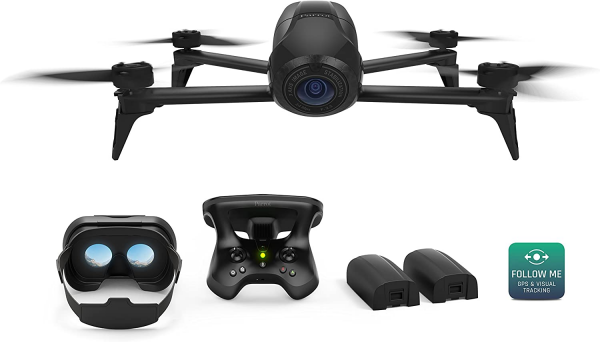Parrot
Parrot Bebop 2 Power Drone: an update, for lack of something better
Aprox. 569€
See specificationsIn an attempt to resist the Chinese offensive, Parrot is offering an update to its Bebop 2 and upgrading it to Bebop 2 Power. If, as the name suggests, we gain in power, autonomy and functionality, we were curious to see what the evolution brought in photo and video. And whatever improvements, are they enough to compete with DJI?
Positive points
Ease of handling.
Efficient autopilot modes.
Convincing automatic shooting modes.
Good autonomy.
Intuitive application.
Stability.
Bad points
Disappointing image quality
No 4K video.
Lack of image adjustments.
Low range of video signal.
Software image stabilization only.
Our review
Presentation
The Bebop 2 Power is not limited to its famous "Dual Black" coating (glossy and matte black). It is a real evolution of Bebop 2, and even if for many it arrives too late, it nevertheless brings its share of improvements, including an increasing power, better autonomy, but also an automation of the recording of the sequences of flight. Clearly, Parrot intends its Power for the general public, but between the launch of its first version and this version, the market has completely transformed and very successful drones fulfill most of the aspirations of this sector. So, is this Bebop 2 Power up to its name and its mission?
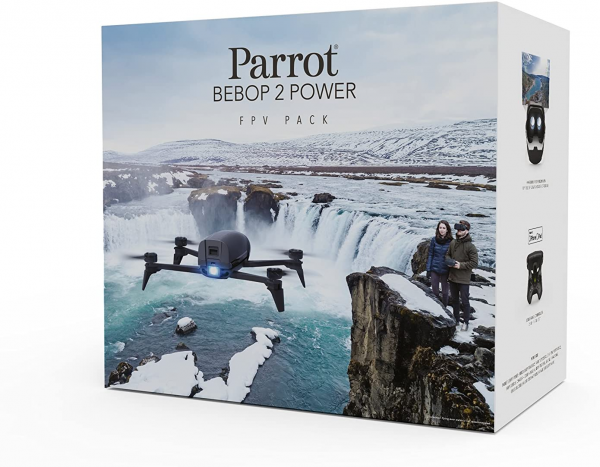
Getting started
Apparently nothing changes. The Bebop 2 Power is, like the Bebop 2, made of a reinforced fiberglass structure and Grilamid and its dimensions, contained, do not change: 328 x 382 x 89 mm (L x W x H). The silhouette of the Bebop 2 Power gains in aggressiveness with its Dual Black shade and if the manufacturing is not perfect, it remains of a correct level. The design is simple and practical, the battery can be inserted and removed easily. The lens is protected by a soft shock absorber and polystyrene. In any case, it will be easy to replace parts, for sale on the Parrot Store, or to tighten some if necessary.
The plastic is hollowed out to lighten the weight without harming the rigidity and the construction is in two parts: the electronic part (video system, battery, general electronics) is suspended on a cradle which also serves to absorb the vibrations generated by the engines. Although getting started is simple, we know more effective now. Indeed, the folding propeller system found on the Breeze 4K or the DJI Spark is exemplary and who is not equipped passes for late. It is therefore necessary here to use a tool (supplied) to tighten the propellers once engaged on the motors. Nothing complicated, but be careful not to lose it. In addition, it will be necessary to pay close attention to the direction of assembly, because now all the propellers are black. Before, it was even simpler: the white ones went in front, the black ones behind.
After inserting and switching on the battery, previously charged for an hour and a half, it is enough to switch on Bebop 2 Power with a press on the large white button, which also serves as a rear light once it switches to blue (the most attentive will have noticed that beforehand, it was red or green). Connection to your smartphone is via Wi-Fi using the Parrot FreeFlight Pro application, compatible with iOS and Android. This application has evolved considerably: it is now possible to launch the drone by hand, to adjust the flight modes "Sport" or "Video", to access the modes "Camera operator" and "Touch and Fly", to designate points of interest , or to make "Magic Dronies" (aerial selfies) and "Auto Shots" (video and professional movements). There is also a shortcut to the Flight Plan, a new camera widget, a range bar with direct link to the associated parameters, and finally the new "Find my drone" function to geolocate your drone in real time. If you want to go through the flight controller - and we highly recommend it, as the piloting pleasure is increased - just switch on the controller first, then the drone. The connection is also made by Wi-Fi, the smartphone is connected to the controller with a USB cable. The application launches automatically. Once everything is connected, all that remains is to activate the motors and take off.
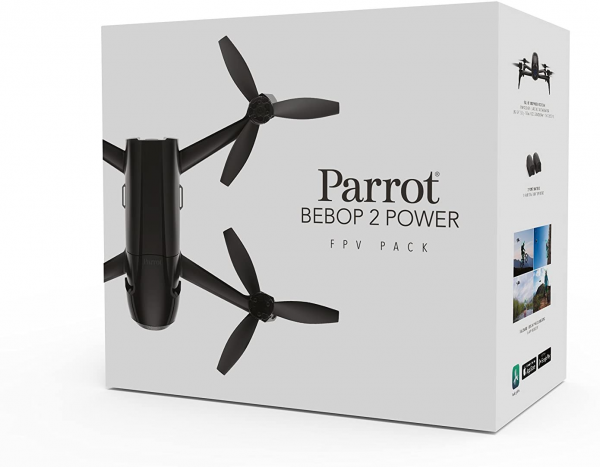
Flight
Far from the complexity of professional drones or racing (racers) without any assistance, piloting the Bebop 2 Power is almost childish. Press "Take Off" to take off, "Landing" to land. In between, you will have to play with the joysticks to control the height of the drone, the rotation, the lateral displacements, as well as the advance and the recoil. The Bebop 2 Power, like its predecessor, shows great responsiveness.
The "Video" or "Sport" settings allow you to manage the speed of rotation of the motors and the inclination of the drone, therefore its speed of movement in space. From gentle to nervous, everyone can find the flight parameters that follows them best. As on the Bebop 2, stability remains essential: despite the gusts of wind that pushed our drone up to 25 km / h, the latter has not weakened.
In general, piloting the Bebop 2 Power is quite enjoyable, because the drone proves to be powerful enough to start dreaming of being a pilot and stable enough to take interesting shots. In addition, the new piloting modes "Dronies" and "Auto Shots" help to record some interesting sequences which can be difficult for beginners. The big black dot finally comes from the link. If it is given at 2 km maximum with the Skycontroller, in fact, it is difficult to reach the kilometer and, above all, the signal is cut quite suddenly. Suddenly, it is the black screen and it only remains to recall the drone with the RTH function. With the smartphone, it's worse: do not expect to exceed 200 to 300 m in open ground.
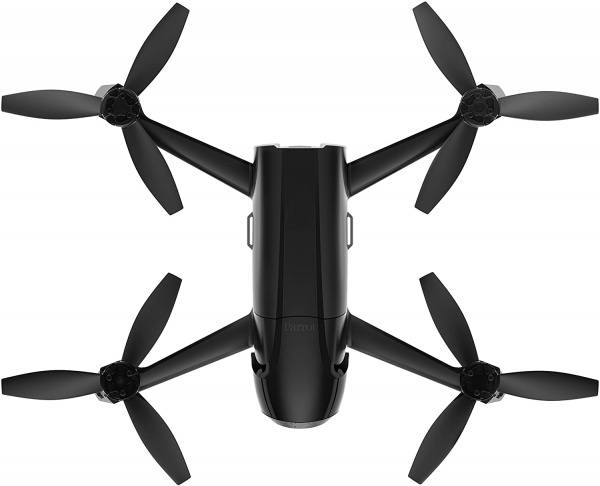
Image quality
After a fun first flight experience (which furiously reminds us of our tests of the previous Bebop 2), we start the video and we start to think we are a cameraman. Seeing the earth seen from the sky is always just as fantastic and bringing back aerial memories is all the interest of this kind of drone "ready to photograph".
The new application and new features of Parrot Bebop 2 Power make it easier to take pictures. Thus, the "Camera operator" function keeps the subject to be filmed in the image according to the movements of the drone and helps to compose its image while respecting the rule of thirds, for example. Similarly, the "Auto Shots" simulate shots worthy of Hollywood plans. One of our favorites, "Rise", makes it possible to advance the objective drone pointed downwards then gradually reveal the environment around it while continuing to advance. Unfortunately, the 14 MP Aptina CMOS sensor and the lens have not changed. Only the treatment is improved, according to Parrot.
On the ground, we feel a little better, especially in good light conditions: the images are a little more detailed, but also a little more grainy. However, the image quality is not generally breathtaking and cannot satisfy an amateur of aerial photography. The video, blocked in Full HD 1080 30p, jerks on the slightest movements a little too fast and as soon as the light is no longer optimal, the result is frankly disappointing. The finest details disappear in a mixture of unpleasant pixels, especially at the edges.
The photo doesn't get any better. Native JPEG files smooth everything in their path and raw files, which must be post-processed abundantly to get something drinkable out of them, are not very practical to use, especially since they are spherical. Marketing had warned us, arguing that the target is clearly not the amateur of aerial photography, but rather the public who posts on networks and does not look at their images elsewhere than on a smartphone. So, but the result is frankly not flattering and the competition is ultimately better, especially the DJI Spark.
Last point of complaint regarding the storage of images: the Bebop 2 Power still does not carry a slot for an SD card and the internal storage capacity is always limited to 8 GB.

Autonomy
The Parrot Bebop 2 Power is doing very well in terms of autonomy. The battery capacity goes from 2,700 mAh on the Bebop 2 to 3,350 mAh for a theoretical autonomy of 30 min. A very respectable value, equivalent to that of our reference drone the DJI Mavic Pro. Not content with having increased this autonomy, Parrot actually doubles it, since the FPV pack comes with two batteries! It is therefore an hour of theoretical flight that the remote pilot is offered. In the field, it will take 20 to 25 minutes of flight per battery depending on weather conditions. In any case, it's better than the competition, since the Spark does not last more than 15 min.
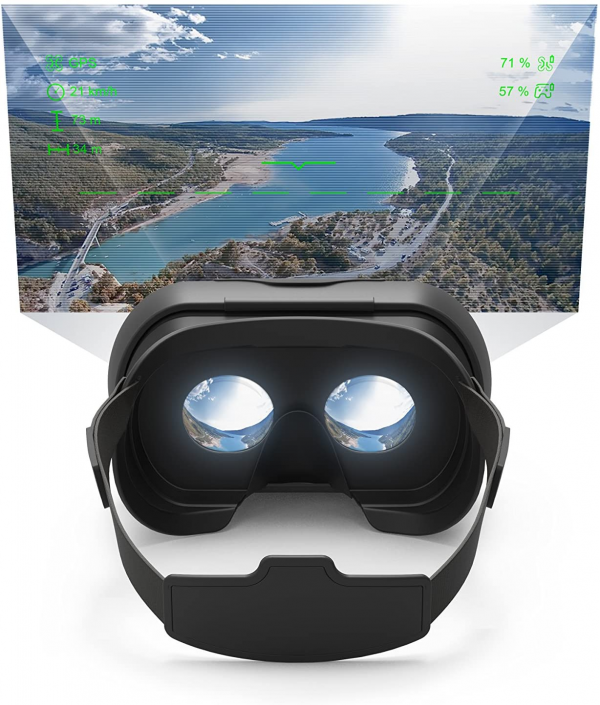
Conclusion
The Parrot Bebop 2 Power arrives too late. Certainly, it has undeniable qualities. Admittedly, the application has evolved well and the interface is pleasant and intuitive. Certainly, the flight modes are fun and the cinematographic functions bring a fun and relevant side to the shooting, but the image quality is too far behind what the competition offers to allow the Bebop 2 Power to position with panache. He has record autonomy and a commendable flight experience. Unfortunately, not sure that this is enough to counter the tidal wave from China.
Specifications

